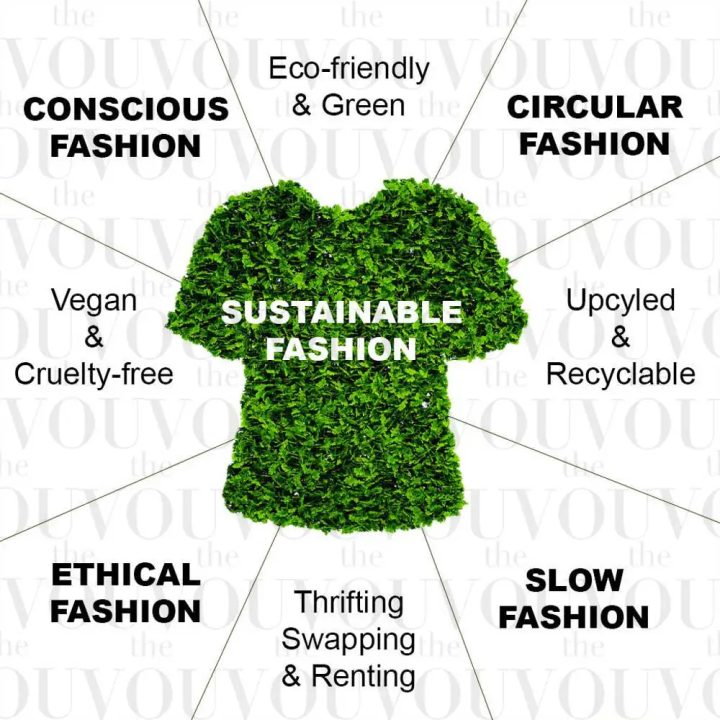Stay Ahead of the Curve by Checking Out Innovative Style Trends
In a sector as dynamic as style, remaining ahead involves greater than just following current patterns-- it demands an exploration of innovation. Smart fabrics, as an example, are transforming garments right into practical work of arts, while 3D printing is transforming style processes with its customizable, waste-reducing abilities. As sustainability becomes a foundation, advancements like environment-friendly materials and round style methods are reshaping ecological duty - Cape Town Sustainable Fashion. Furthermore, the merging of technology and style heralds a brand-new age of consumer involvement. How, after that, can these arising patterns redefine the future of fashion, and what effects do they hold for brand names looking for to prosper in this advancing landscape?

Welcoming Smart Textiles
In current years, the garment industry has witnessed a transformative change with the assimilation of wise textiles, a cutting-edge advancement that mixes technology with textile. This advancement represents not just a blend of aesthetic appeals and capability but also a significant jump in the direction of sustainability and personalization in vogue. Smart textiles, additionally understood as e-textiles, embed sophisticated electronic devices such as sensors and conductive threads within the material, making it possible for garments to connect with the setting or the user.
These textiles are made to keep track of physical criteria, such as heart price or body temperature, offering real-time health and wellness analytics. Beyond health and wellness applications, wise fabrics are also being utilized for flexible garments, which can alter shade or pattern in response to environmental stimuli, thus offering a vibrant style experience.
In addition, the development of energy-harvesting fabrics that generate power from activity or sunlight is leading the way for self-dependent wearable innovation. This technology is interesting ecologically aware customers and developers intending to decrease the eco-friendly impact of style. As research study and growth in this field breakthrough, smart textiles are expected to come to be increasingly common, improving the landscape of modern-day fashion with their multifunctional abilities.
The Rise of 3D Printing
Changing the production landscape, 3D printing has actually become a game-changer in the apparel industry. This sophisticated innovation has enabled designers to press the boundaries of creative thinking, generating detailed and tailored garments that were formerly unimaginable. By leveraging digital style and additive manufacturing, 3D printing promotes the development of complicated geometries and patterns, enabling designers to trying out brand-new appearances and frameworks.
A notable advantage of 3D printing in vogue is its capability to generate on-demand, reducing waste and decreasing supply needs. This efficiency not just enhances manufacturing processes but likewise enables fast prototyping, making it possible for designers to bring their visions to life in a much shorter duration. Moreover, 3D printing supports personalization to a level unmatched by typical techniques, supplying individualized fits and distinct layouts tailored to private customer preferences.
The surge of 3D printing has also equalized style, making it obtainable to emerging developers that can now make premium items without significant economic investment in standard manufacturing infrastructure. As modern technology remains to advance, the fashion business is poised to harness the complete possibility of 3D printing, checking out new materials and methods that will most certainly redefine just how style is developed and created.
Lasting Style Innovations
As the fashion business grapples with journalism requirement for environmental duty, sustainable fashion technologies have arised at the leading edge of transformative change. The expanding recognition of ecological effect has actually fueled a shift in the direction of even more eco-conscious techniques and products. Brands and developers are currently prioritizing sustainability, incorporating approaches that minimize waste and reduce carbon footprints.
One considerable growth is the surge of circular style, which emphasizes recycling and upcycling to expand the lifecycle of garments. This approach not only reduces waste but likewise urges consumers to adopt a more mindful approach to apparel intake.
Another breakthrough depends on the adoption of ingenious dyeing strategies that make use of waterless processes or all-natural dyes, thereby decreasing the large quantities of water and chemicals traditionally used in textile dyeing. In addition, advancements in biotechnology have resulted in the development of lab-grown natural leather and fabrics, supplying cruelty-free and ecologically pleasant choices to traditional products. With these introducing efforts, the apparel industry is making purposeful strides towards a much more lasting future.

Tech-Integrated Apparel
Tech-integrated apparel represents a cutting-edge fusion of fashion and innovation, improving how individuals interact with their clothes. This innovative domain is noted by the incorporation of smart fabrics and embedded digital components, enhancing both capability and aesthetic appeal. From physical fitness trackers embedded in sports apparel to warmed coats regulated by means of smart device apps, tech-integrated garments supplies consumers extraordinary comfort and versatility.
Pioneering brands are driving this trend, focusing on developing garments that react to ecological stimulations or customer commands. check my reference As an example, some garments can their explanation transform shade or pattern in response to temperature level shifts, while others include biometric sensing units to keep an eye on wellness metrics like heart price or anxiety degrees. The smooth assimilation of innovation into textiles also prolongs to ecological sustainability, with efforts to establish self-cleaning textiles or garments that readjust to weather conditions, hence reducing the need for multiple layers.
Additionally, the arrival of wearable technology is not just restricted to garments but reaches devices like watches and eyewear, additional broadening the range of tech-integrated fashion. As the sector remains to introduce, the capacity for personalization and customization in garments expands, supplying customers special, tech-enhanced style experiences that cater to their individual requirements and preferences.
Future of Virtual Style
Recently, the future of virtual style has actually become a transformative force within the sector, leveraging improvements in electronic innovation to redefine how style is developed, experienced, and taken in. By integrating increased reality (AR), online truth (VR), and 3D layout devices, designers can now craft interactive and immersive experiences that go beyond traditional style boundaries. Digital style permits for the creation of garments that exist solely in electronic settings, using limitless opportunities for technology without the limitations of physical manufacturing.
This electronic change not only presents chances for innovative expression yet likewise addresses sustainability problems integral in standard style methods. Cape Town Sustainable Fashion. By eliminating the requirement for physical resources, virtual fashion reduces waste and lessens carbon footprints. Additionally, the rise of online fashion aligns with the raising consumer demand for one-of-a-kind and tailored experiences, as digital garments can be tailored and customized to individual preferences with simplicity

Final Thought
The fashion sector's future lies in the assimilation of ingenious innovations and lasting methods. Online style is poised to redefine customer interactions.
In recent years, the fashion industry has witnessed a transformative change with the combination of wise textiles, a cutting-edge advancement that blends modern technology with material.As the style market grapples with the pressing demand for environmental duty, lasting style advancements have arised at the forefront of transformative adjustment.In current years, the future of digital style has actually arised as a transformative pressure within the industry, leveraging improvements in digital technology to redefine how fashion is produced, experienced, and eaten. The rise of digital fashion straightens with the raising consumer need for unique and personalized experiences, as virtual garments can be personalized and customized to private preferences with convenience.
The style market's future lies in the combination of sustainable methods and innovative modern technologies.